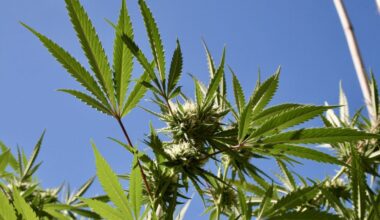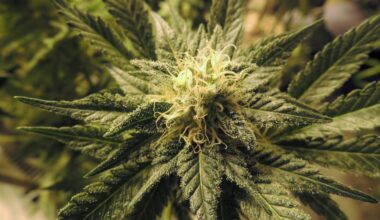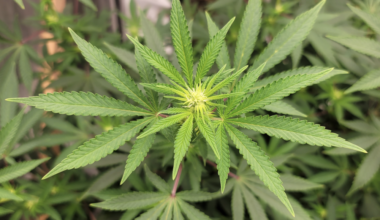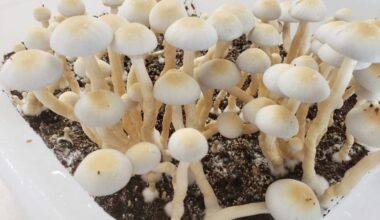From fixing a grow to track each plant, a glance at new cultivation technology solutions is designed to improve efficiencies and make more data analytics.
The innovation focuses on technology in use now, from fixing a grow to track each plant, and proposes new technology solutions that are either in situ now or on the drafting board. Furthermore, all designed to both improve the growth efficiencies of cannabis and make more data analytics for better cannabis cultivation within the future.
The tech way forward for cannabis cultivation is already happening in some places around the country, borrowing from or maybe leading agricultural technology development for growing other crops like cut flowers.
cheap cannabis seeds cultivation uses methods as other agricultural cultivation grow operations—either outdoor, greenhouse, or indoor—with essential distinctions about what works best and why all are bound up in regulatory seed-to-sale reporting responsibilities on a replacement high dollar crop.
Growers have found that cannabis is quite just another agricultural plant. Yes, cannabis grows wild. However, extending it commercially and profitably is about managing how this weed becomes a repeatable, valuable product that meets the expectations of a demanding consumer willing to buy a top-quality agriculture product.
Outdoor Cultivation
Location is critical for outdoor growth because it faces many variables: weather, pest mitigation, irrigation challenges, and even challenges due to the atmosphere.
Year-round outdoor growing regions that are nearest to the equator—Jamaica, for instance—are better for larger Sativa-dominant plants. Growers say it is in these regions where the longer term of outside cannabis grows will naturally gravitate.
In the US, outdoor cannabis grow has been the legacy grow operation for cannabis since the cultivation of cannabis began in earnest within the 1960s, mostly in California’s Emerald Triangle in Humboldt County. This area remains the most important producer of both the black market and legal cannabis within the US.
The Greenhouse
There are large cannabis greenhouse operations in both Canada and therefore the US—such because of the massive 40-acre Copper State Farms in Snowflake, Arizona; the Glass House Farms 505,000-square foot greenhouse in Carpinteria Valley near l. a., California; or the Aphria Inc. greenhouse, which is 2.4 million square feet of cultivation space in Leamington, Ontario, Canada.
All offer the controls needed to urge repeatable plant growth. However, all accompany their own set of drawbacks.
Greenhouse glass is dear. Controlling the sun and, therefore, the indoor HVAC environment of a greenhouse is challenging. Meeting the environmental requirements about power and water usage can put a strain on the rock bottom line.
According to local ordinances, the greenhouse operator also has to find how to mitigate the smell of the cannabis growing there.
Nevertheless, there are inventions for the greenhouse operation to help reduce costs and nurture the plants to avoid any marijuana leaves curling up. For instance, greenhouses are often fitted or retrofitted with retractable energy-saving shade curtains, which may be wont to adjust the warmth inside the greenhouse; and boiler units using biomass for fuel to power heating units. Other ideas include installing predicament radiant floors for the more controllable area and zone heating, further reducing overall heating costs.
The Indoor Grow
When Colorado legalized adult-use cannabis in 2014, there was a run on warehouse space in Denver and other jurisdictions. Most Colorado cities were required to possess the growth and retail sales operations within the same building. Fixing expands in renovated industrial buildings was not as straightforward as early growers had hoped. They began encountering issues with mould and HVAC access and use.
Growers who had come from outdoor grows, or worked in much smaller indoor grows, were now tasked with being environmental engineers and smart building designers while managing development at scale—with sometimes disastrous consequences, like losing a whole extent thanks to mould. The indoor concept evolved as hard lessons were learned.
Indoor cannabis cultivation has nearly four significant issues to deal with: lighting, HVAC, pest mitigation, and contamination like mould or other pathogens, which will come from either the building itself or the human working with the plants. All have come under more and more scrutiny and control because the industry evolves. Moreover, it resolves some topics on scrog grow cultivation.
Early on, lights were the main target of getting a more efficient, better yield operation overall. It came with a group of pros and cons still being figured out today. Cannabis cultivation lighting has come right down to a discussion of high sodium (HPS), the first preferred light for cannabis for indoor grows, versus light-emitting diodes (LED). However, HPS lights generate excessive heat and tend to spread light too widely within a grow. LEDs are initially costlier, but they operate cooler, use less electricity, and are more directable.
Apps To The Rescue
Seed-to-sale tracking may require a regulatory compliance process that has always been a neighbourhood of the cannabis growing process, mostly in situ, to eliminate the merchandise’s potential diversion to the black or market.
One company has built an app to collect and streamline that information with its automation solution software. The software allows cannabis growers to automate the info entry of compliance information into the compliance seed-to-sale tracking platform and connect with state compliance tracking at Metrc, a software application reporting tool employed by most states.
The Rise Of The Vertical Farm
One of the newer ideas being explored during agriculture tech is that the vertical farm—growing plants vertically in a smaller land footprint to form better use of growing space in non-traditional farm locations.
Vertical farming is now working its way into the cannabis business. It is a wall of plants inside a gas-tight envelope that eliminates contamination and pests issues, with plants facing one another.
Artificial Intelligence
Bringing AI into the grow operations for cannabis and other plants may be a concept that’s getting closer to reality. For instance, the University of California-Riverside was recently awarded a $10 million grant to develop AI for sustainable water, nutrient, salinity, and pest management within the western US (7). AI and digital agriculture, the transdisciplinary application of high-performance computing and hyperdimensional data, will be developed to enhance farming resilience. The AI project at UC-Riverside is concentrated on digital tools for agricultural input management, early pest detection, mixing physical and statistical models, and daily remote sensing merged with recommendations for soil-water balanced irrigation scheduling and salinity leaching and fertilization—all during a single framework.
Bottom Line
Today, as cannabis has been legalized in some form (medical, adult-use, or both) with the likelihood of more to return, all three sorts of growing operations—outdoor, greenhouse, and indoor—continue to be used.
Nevertheless, there are, and can be, more states where cannabis grows operations do not work outdoors due to winter and summer weather challenges.
Greenhouses could also be the only choice for a few states. Still, seasonal operational expenses related to fluctuating weather and heating-venting-air conditioning (HVAC) demands could seriously affect earnings margins.
In other states joining the legalized cannabis grow the community is compromised by smaller footprints of available land, as in built-out states like New Jersey, leaving indoor farming (both updated hydroponic grows and new cultivation ideas like vertical grows) because the only logical option to make a profit off of a high-dollar crop like cannabis.
Medical Disclaimer:
The information provided in these blog posts is intended for general informational and educational purposes only. It is not a substitute for professional medical advice, diagnosis, or treatment. Always seek the advice of your physician or other qualified healthcare provider with any questions you may have regarding a medical condition. The use of any information provided in these blog posts is solely at your own risk. The authors and the website do not recommend or endorse any specific products, treatments, or procedures mentioned. Reliance on any information in these blog posts is solely at your own discretion.





